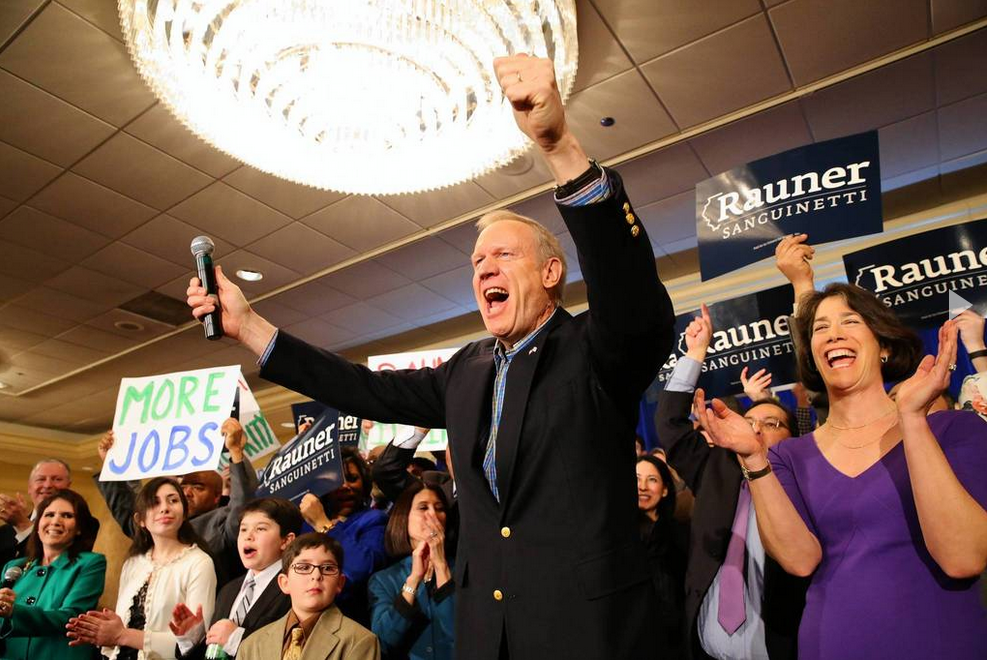Bruce Rauner came into election day with a double-digit lead in polling, yet only beat Kirk Dillard by 23,000 votes, or 2.8 percent of the 1,370,000 cast. A late push by unions and the Democratic Governors Association, somewhat ironically, gave Dillard a tailwind against the occasional Democratic donor and friend of Rahm.
Yet the big picture was an old one. Dillard caught up to Rauner in with a strong performance in Central Illinois, gaining 11,000 votes over Rauner in Sangamon County and 2,500 in Peoria County. Rauner, by contrast, took two counties by more than 10,000 votes: Cook (almost 27,000) and Lake (11,000), while racking up 35,000 more votes than Dillard in the collar counties combined. [Update: an excellent postmortem from Illinois Election Data.]
Here's a map of their vote differentials, by county. Red are counties where Dillard got more votes than Rauner, green is vice versa, and the intensity of the color reflects how many votes each picked up.
Meanwhile, in Chicago proper, Rauner just edged out Dillard, 43 percent to 39 percent, just 1,722 votes. But there was a distinct geography to Rauner's victory. He won 50-70 percent of the vote in the central city, absolutely dominating Dillard. (It might not sound like much, but Rauner won more votes in the 42nd Ward than were cast for all the GOP candidates in far-downstate Alexander County).
It presages an interesting race. Rauner could make Pat Quinn even more vulnerable in the wealthy collar counties; he outperformed Dillard in Democratic-leaning counties outside the Chicago area, like Rock Island, St. Clair, Alexander; and his anti-union rhetoric may play well in downstate Republican strongholds that are politically and culturally Southern.
But he'll shave to grapple with what look likes a weakness in Central Illinois. That region will still go GOP, but he'll need a strong turnout in its biggest counties to offset the flood of Chicago votes.




